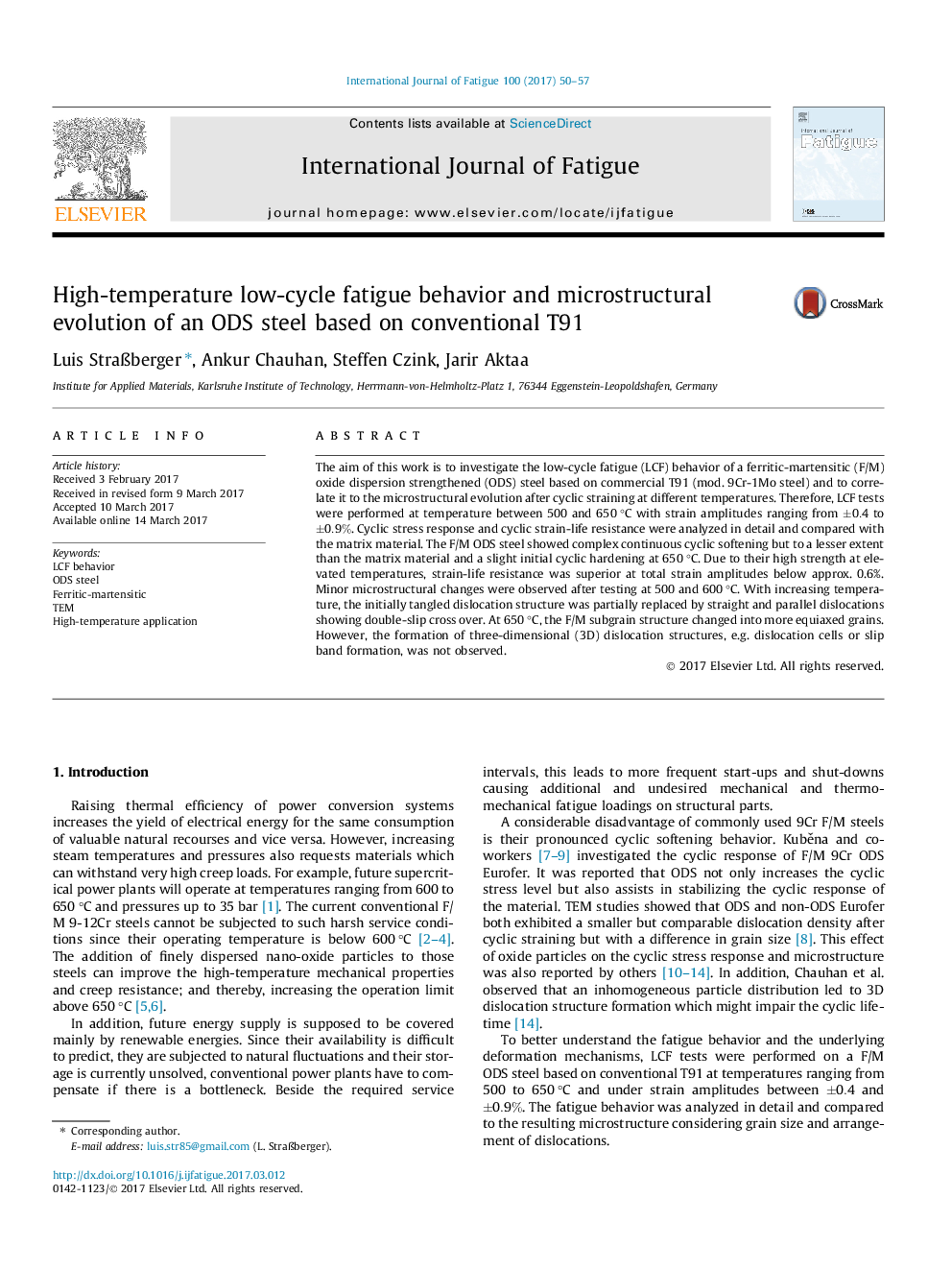| Article ID | Journal | Published Year | Pages | File Type |
|---|---|---|---|---|
| 5015116 | International Journal of Fatigue | 2017 | 8 Pages |
Abstract
The aim of this work is to investigate the low-cycle fatigue (LCF) behavior of a ferritic-martensitic (F/M) oxide dispersion strengthened (ODS) steel based on commercial T91 (mod. 9Cr-1Mo steel) and to correlate it to the microstructural evolution after cyclic straining at different temperatures. Therefore, LCF tests were performed at temperature between 500 and 650 °C with strain amplitudes ranging from ±0.4 to ±0.9%. Cyclic stress response and cyclic strain-life resistance were analyzed in detail and compared with the matrix material. The F/M ODS steel showed complex continuous cyclic softening but to a lesser extent than the matrix material and a slight initial cyclic hardening at 650 °C. Due to their high strength at elevated temperatures, strain-life resistance was superior at total strain amplitudes below approx. 0.6%. Minor microstructural changes were observed after testing at 500 and 600 °C. With increasing temperature, the initially tangled dislocation structure was partially replaced by straight and parallel dislocations showing double-slip cross over. At 650 °C, the F/M subgrain structure changed into more equiaxed grains. However, the formation of three-dimensional (3D) dislocation structures, e.g. dislocation cells or slip band formation, was not observed.
Related Topics
Physical Sciences and Engineering
Engineering
Mechanical Engineering
Authors
Luis StraÃberger, Ankur Chauhan, Steffen Czink, Jarir Aktaa,
